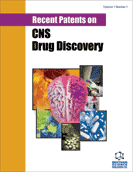Abstract
Relapse and neurodegeneration are two of the major therapeutic targets in alcoholism. Fortuitously, the roles of glutamate/NMDA receptors (NMDARs) in withdrawal, conditioning and neurotoxicity mean that NMDAR inhibitors are potentially valuable for both targets. Preclinical studies further suggest that inhibitory modulators that specifically reduce the co-agonist effects of polyamines on NMDARs are potential non-toxic medications. Using agmatine as a lead compound, over 1000 novel compounds based loosely on this structure were synthesized using feedback from a molecular screen. A novel series of aryliminoguanidines with appropriate NMDAR activity in the molecular screen were discovered (US patent application filed 2007). The most potent and selective aryliminoguanidine, JR 220 [4- (chlorobenzylidenamino)- guanidine hydrochloride], has now been tested in a screening hierarchy for anti-relapse and neuroprotective activity, ranging from cell-based assay, through tissue culture to animal behavior. This hierarchy has been validated using drugs with known, or potential, clinical value at these targets (acamprosate (N-acetyl homotaurine), memantine and topiramate). JR220 was non-toxic and showed excellent activity in every screen with a potency 5-200x that of the FDA-approved anti-relapse agent, acamprosate. This chapter will present a review of the background and rationale for this approach and some of the findings garnered from this approach as well as patents targeting the glutamatergic system especially the NMDAR.
Keywords: NR2B neuroprotection, polyamine, relapse
 11
11





















